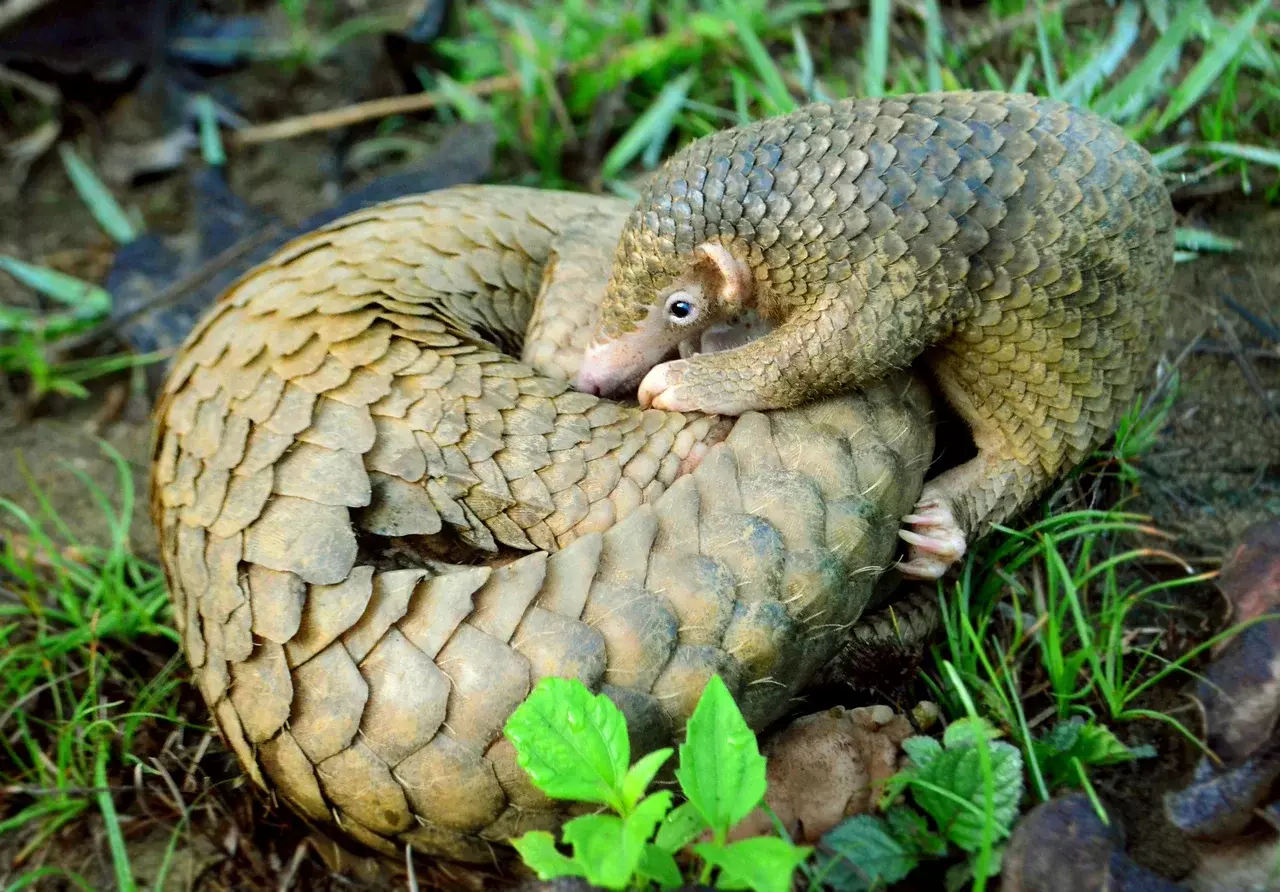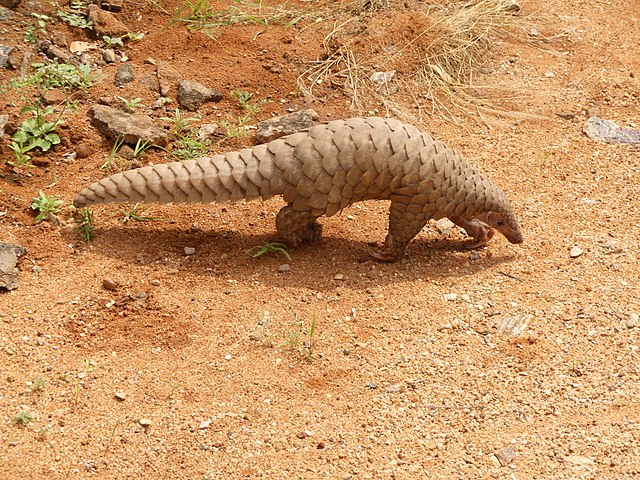Palawan pangolin: the amazing mammal that rolls into a ball of scaly armor
One Earth’s “Species of the Week” series highlights the flagship species of each of the 844 unique ecoregions contained within Earth’s bioregions.
Pristine turquoise waters surround giant rock formations with lush tropical vegetation and biodiversity a top. It is no coincidence that Palawan Island in the Western Philippines has been called the "Most Beautiful Island in the World,” and its 232 endemic species are just as mesmerizing.
One such species is the anteater-like Palawan pangolin covered in body armor of multiple rows of overlapping scales. Know also as the Philippine pangolin or locally as the balintong, meaning “one who rolls over," this mammal curls into a tight ball when threatened.

Palawan pangolins are the flagship species of the Palawan Rainforests ecoregion, located in the Philippines & Sulu Sea Tropical Forests bioregion (IM15).
There are eight species of pangolins in the world, four each in Africa and Asia, and the Palawan pangolin. The Palawan pangolin’s body measures around 30 to 90 centimeters (12-35 in) length and has a tail of 26 to 88 centimeters (10-35 in) long. They vary drastically in size, with some weighing less than a kilogram to others weighing over 34 kilograms (77 lb).
The small, triangular scales are made of the protein keratin, cover the entire body except for the face and underbelly, and make up at least 20% of the pangolin’s body weight. Their scales come in an assortment of olive, brown, and yellow shades, acting as camouflage during the night. New scales grow when lost, and each pangolin always has the same number of scales throughout its lifetime.

Five sharp claws on each foot serve the Palawan pangolin in their vigorous digging but not as weapons. Their primary defense is to roll into a tight ball, or if ready for a fight, will use their swinging tails to stab enemies with their sharp scales.
Pangolins also use their tails to grab onto branches and stand and run solely on their hind legs, using it for balance. The Palawan pangolin has a tongue that can stretch up to 25 centimeters (10 in) long and is coated in sticky saliva that is useful for catching insects.
Palawan pangolins play a crucial role in their ecosystem. They are fantastic tenders of soil as they continually dig and root around and provide the island with all-natural pest control. It is estimated that a single pangolin consumes as many as 70 million insects per year, mainly termites and ants.
What is most peculiar about Palawan pangolins is their sustainable dieting behavior. They only eat a portion of an ant or termite colony, leaving most of the mound intact for the colony to regrow. This serves as a continuous food source for the pangolin and as an example of taking only what one needs from nature.

Yet, Palawan pangolins are sadly one of the most trafficked animals on Earth, with their population declining by up to 95% between 1980 and 2018. Despite having no known medicinal value, their protective scales are highly sought after in the traditional Chinese medicine trade.
Even with five protected areas on the island, deforestation driven by illegal logging has limited the Palawan pangolin’s habitat, further causing a population decline. They are listed as critically endangered in conservation status.
A study by Global Ecology and Conservation in December 2020 does offer hope for the species. Researchers spotted pangolins in 17 of the 24 municipalities in Palawan, and a local survey showed a high level of willingness among communities to protect the animals.
Conservationists are optimistic that the Palawan pangolin population could recover if the appropriate protection measures are set up to safeguard the species. The island's unique ecosystem and beauty depend on it and every creature.
Interested in learning more about the bioregions of Indomayala? Use One Earth's interactive Navigator to explore bioregions around the world.
Launch Bioregion Navigator.jpg?auto=compress%2Cformat&w=1440)


